
A clipper was a type of mid-19th-century merchant sailing vessel, designed for speed. Clippers were generally narrow for their length, small by later 19th century standards, could carry limited bulk freight, and had a large total sail area. "Clipper" does not refer to a specific sailplan; clippers may be schooners, brigs, brigantines, etc., as well as full-rigged ships. Clippers were mostly constructed in British and American shipyards, although France, Brazil, the Netherlands and other nations also produced some. Clippers sailed all over the world, primarily on the trade routes between the United Kingdom and China, in transatlantic trade, and on the New York-to-San Francisco route around Cape Horn during the California Gold Rush. Dutch clippers were built beginning in the 1850s for the tea trade and passenger service to Java.

Iron-hulled sailing ships represented the final evolution of sailing ships at the end of the age of sail. They were built to carry bulk cargo for long distances in the nineteenth and early twentieth centuries. They were the largest of merchant sailing ships, with three to five masts and square sails, as well as other sail plans. They carried lumber, guano, grain or ore between continents. Later examples had steel hulls. They are sometimes referred to as "windjammers" or "tall ships". Several survive, variously operating as school ships, museum ships, restaurant ships, and cruise ships.

Ariel was a clipper ship famous for making fast voyages between China and England in the late 1860s. She is most famous for almost winning The Great Tea Race of 1866, an unofficial race between Fuzhou, China and London with the first tea crop of the 1866 season.

Lothair was a British clipper ship built by William Walker and launched in Rotherhithe, London, on 2 July 1870. After many years of service as a tea clipper, she was operated by merchants in Italy and Peru before being lost in 1910.

Sir Lancelot was a clipper ship which sailed in the China trade and the India-Mauritius trade.

Challenger was a wooden clipper ship built in 1852 by Richard & Henry Green, in their Blackwall Yard for Hugh Hamilton Lindsay, London. She was the 291st ship built by the yard and was a remarkable departure from the previous ships produced. In 1850 the American clipper ship Oriental visited West India Docks, the largest clipper ship to visit London and the Admiralty was given permission to take her lines, and this was done by Messrs Waymouth and Cornish, both Lloyd's Surveyors, in the dry dock at Green's Yard in Blackwell. This is probably the reason that it was said that Challenger's design was inspired by and had a close resemblance to the Oriental's.

Stag Hound was launched on December 7, 1850 in East Boston, Massachusetts. Designed by shipbuilder Donald McKay for the California trade, she was briefly the largest merchant ship in the world. She was in active service from 1851 until her total loss in 1861.
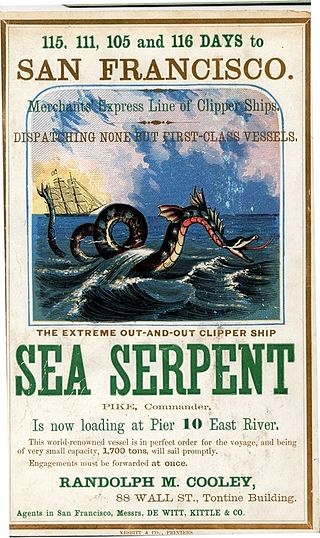
Sea Serpent was an 1850 extreme clipper that sailed in the San Francisco trade, the China trade, and the transatlantic lumber trade. She was one of the longest lived clippers, with a service life of 36 years and 5 months.
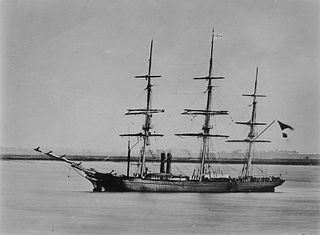
Lahloo was a British tea clipper known for winning the Tea Race of 1870, and finishing second in the Tea Race of 1871. She sailed from Fuzhou to London with over a million pounds of tea in 1868.

Stornoway was a British tea clipper built by Alexander Hall and Sons in Aberdeen, Scotland in 1850. She was a further development by Hall on the clippers built in Aberdeen in 1848, being larger and more obviously suited to deep sea service. She was ordered by Jardine Matheson specifically for the tea trade. In the late 1840s, tea was available earlier in the season in China, so the first ships to load had to beat to windward against the north-east monsoon to get across the China Sea. The details of the hull shape designed by Hall had this requirement in mind.

Windhover was a British tea clipper built in the closing years of construction of this sort of ship. She measured 847 tons NRT. Like the majority of the tea clippers built in the second half of the 1860s, she was of composite construction. She was built by Connell and Co, Glasgow, Scotland in 1868.
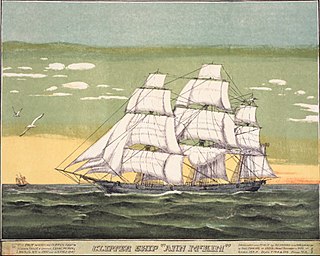
Ann McKim was one of the first true clipper ships. The opening of new Treaty ports in the East in the early 1840s eased an access of the US merchants to China, which demanded the ships that could move cargo faster than then-traditional slow-moving, high-capacity merchant ships. The Ann McKim was one of the ships that had answered the demand in the early years and sailed between New York and China in 1840–1842, until newer and faster cargo-carriers, such as the nearly 600-ton clipper Houqua, the 598-ton China packet Helena, Witch of theWave, and Rainbow, with the last two built expressly to outperform the Ann McKim started dominating the shipping world of the US-China trade and the Ann McKim was shifted back to the South American trade routes.

Fusi Yama was a composite barque ship of roughly 556 tons, built in 1865 by Alexander Stephen & Sons at Glasgow for Killick Martin & Company, London.
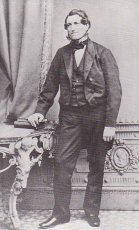
James Killick was a British sea captain, shipowner and entrepreneur. He founded Killick Martin & Company with James Henry Martin.
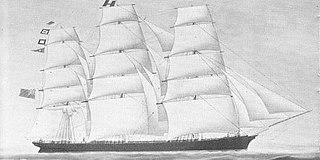
Wylo a composite clipper was built by Robert Steele & Company, Greenock, and launched on 15 April 1869. Robert Steele & Company also built the famous clippers Ariel and Taeping who took part in the great tea race of 1866, and Sir Lancelot another renown clipper ship.

Osaka, A composite barque, built by William Pile, Sunderland, at Yard No. 179 for Killick Martin & Company, the company founded by Captain James Killick and launched on 12 July 1869. William Pile also built Osaka's sister ship Miako, for Killick Martin & Company launched on 15 April 1869.

Killick Martin and Company Ltd is a privately owned global transport and logistics company with its head office in the United Kingdom. The company can trace its origins back to 1861 when it was founded by Captain James Killick and James Henry Martin. The company provides ocean freight, air freight, road freight, customs clearance, warehousing and supply chain management services. The company today has 5 offices in the United Kingdom and a global network of agencies. The ultimate parent company is Atlantic Pacific Group Ltd.
Miako, A composite barque, built by William Pile, Sunderland, at Yard No. 181 for Killick Martin & Company, the company founded by Captain James Killick and launched on 15 April 1869. William Pile also built Miako's sister ship Osaka, for Killick Martin & Company launched on 12 July 1869. The name Miako, today spelt Miyako is a city located in Iwate Prefecture, Japan.
James Henry Martin was a British shipowner and entrepreneur. He founded Killick Martin & Company with James Killick.

John C. Munro was an iron full-rigged ship built in 1862 by James Laing, Sunderland. Dimensions: 169"2'×28'2"×18'5" and tonnage: 612 tons.

















